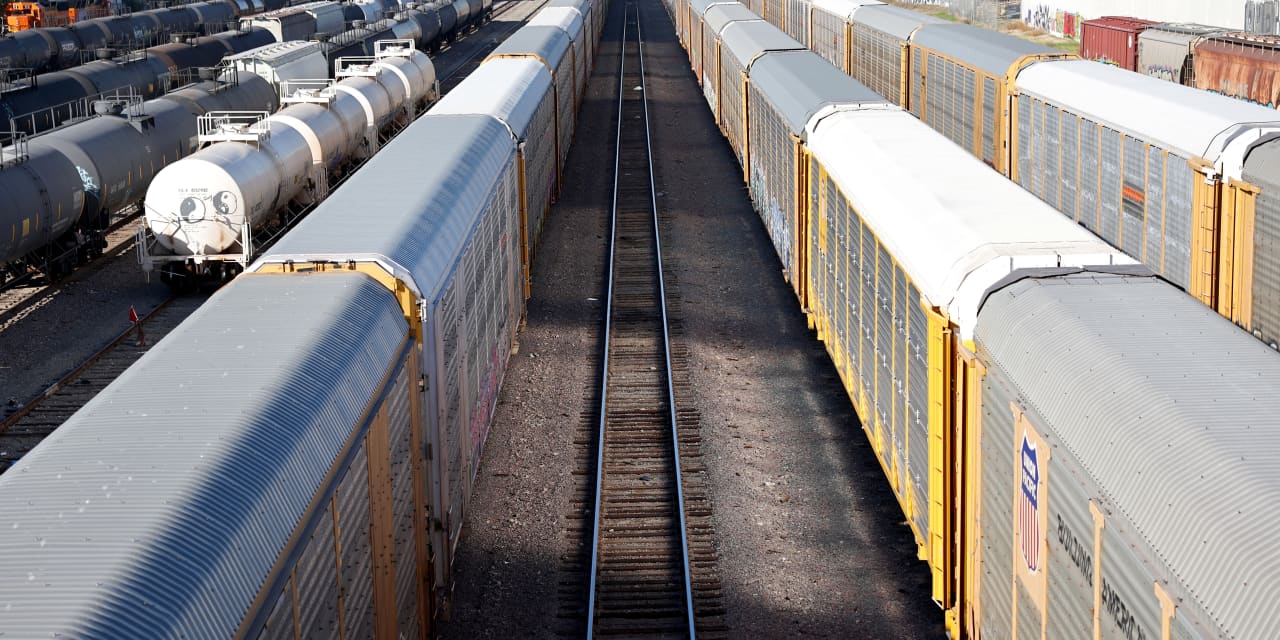Cost-cutting by America’s freight rails has allowed them to increase payouts to investors and made them winning stocks. But shippers and labor unions complain the cuts have hurt service and safety.
Thursday, federal regulators proposed that a railroad’s tracks be opened to its rivals if the railroad falls to give customers reliable service. The notion of rail monopolies allowing competitors to use their facilities has been called “reciprocal switching.”
Impact from the Surface Transportation Board’s reciprocal switching proposal doesn’t seem imminent. The board will take public comments on the rule through late November. And if the rule were adopted, implementation would take time.
Rail shares were off only a bit more than the market, on the news. While the S&P 500 index slipped by 0.3% Thursday, the large railroads fell by around 1% to 1.5%, namely:
Union Pacific
(ticker: UNP);
CSX
(CSX);
Norfolk Southern
(NSC);
Canadian National Railway
(CNI); and
Canadian Pacific Kansas City Railway
(CP). The large BNSF rail system is owned by Warren Buffett’s
Berkshire Hathaway
(BRK. B).
The cost-cutting approach strategy adopted by most railroads is called “precision scheduled railroading”—and its spread has generated heated debate. The STB and Congress held hearings in which shipping customers complained about deteriorating service.
Thursday’s proposal for reciprocal switching based on inadequate service would establish measures of a railroad’s timeliness, consistency. and local service. After customer complaints, a rail rival might be allowed to bid for customers—but the railroads would have to work out complex contracts first.
The Association of American Railroads said it would study the STB proposal. In a statement, the trade group said the rule must “avoid upending the fundamental economics and operations of an industry critical to the national economy.”
Write to Bill Alpert at william.alpert@barrons.com
Read the full article here













Leave a Reply